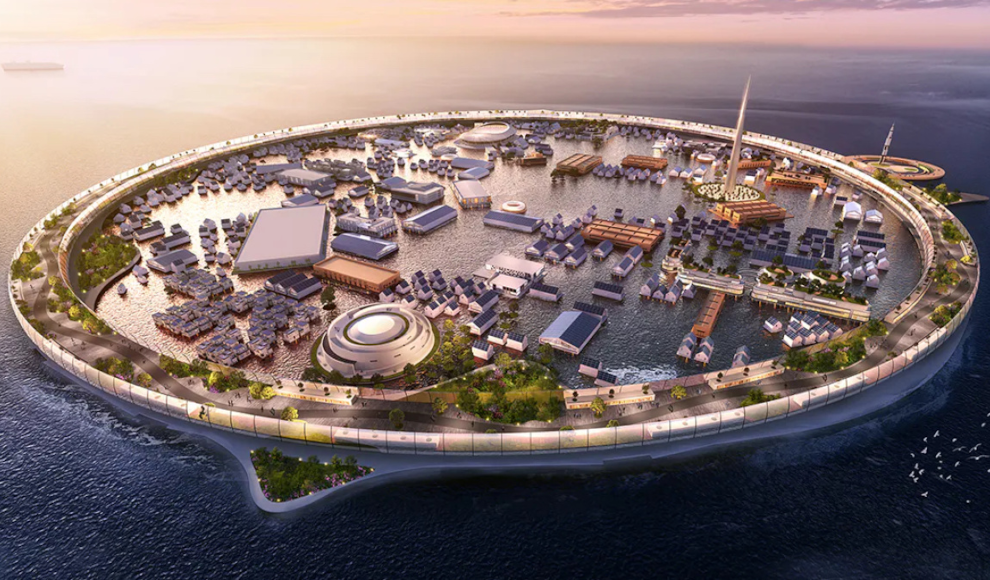A floating city for 40,000 people has been designed by architects, with a focus on serving as a health center. The Dogen City, created by the Japanese architecture firm N-Ark, is planned to be built by 2030 and will have a capacity of 10,000 permanent residents and 30,000 tourists. The city will feature sports facilities, educational institutions, medical facilities, and opportunities for food production, with the aim of creating a sustainable village. The outer ring of the city will protect it from storms and tsunamis, while the buildings will be located inside the ring to minimize exposure to oceanic environmental factors. The city will also have underground data centers that are naturally cooled by seawater, and the city administration and medical facilities will be mostly located below sea level.
The Dogen City will be a hotspot for medical and health tourism, with facilities for robot-assisted surgery and blood and gene analysis. The city will also promote recovery through the use of seawater thermal springs and seafood in the diet. The city is planned to be largely autonomous, producing about 7,000 tons of food annually and generating 22,265,000 kWh of electricity. However, this is currently just a concept, and no investor has been found yet. If a suitable partner is found soon, N-Ark believes that the city could be operational by 2030.
This floating city is part of a growing trend of futuristic urban planning, with Saudi Arabia’s The Line and other similar projects aiming to create sustainable and self-sufficient communities. The Dogen City’s focus on health and wellness is particularly noteworthy, as it could potentially become a model for future cities that prioritize the well-being of their residents. While the concept is still in its early stages, it will be interesting to see if it gains traction and becomes a reality in the coming years.










